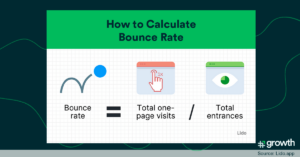Surely, all marketers would agree that the best kind of marketing is one that yields results. And what might be that which guides brands towards great results?
Data and its clever use!
The smart use of data is why you’re guided to a different-looking Amazon or Netflix home page, compared to the person next to you. Confused? Let’s dive in!
Performance Metrics: What Are They?
You may well be aware that marketing is as much a science as it is an art. Without numbers, one cannot really decide which direction the creativity should go (great creativity comes with great adaptability).
“What should be my positioning?”
“Which channels should I use?”
“How often should I reach out?”
All these questions are best answered by data. In fact, every effective marketer swears by the quality of their data.
A performance metric is essentially a data point that measures the performance or effectiveness of a marketing campaign. There are numerous different performance metrics that are used typically. It is essential to pay attention to the right type of performance metric, based on your marketing goals, channels, and product offering.
Performance Metrics: Why Should You Care?
A customer’s journey involves many touchpoints with a brand or product. Thanks to the explosion of digital marketing, the number of touchpoints has only been rising. So, how can a marketer ensure that each of these touchpoints positively impacts the customer journey, ultimately leading to a sale?
Well, one way is to measure the performance of these touchpoints by relying on performance metrics.
Performance metrics tell marketers marketing campaigns on which touchpoints are performing well and which are performing poorly. Based on the metrics, they can then make the decision to either tweak an asset or replace it entirely or even cancel it.
A performance metric is like tasting the food while cooking. It helps you figure out if you’re going in the right direction or if you need to adjust the ingredients.
Types of Performance Metrics
There are many kinds of performance metrics, each with its purpose. You can rely on a single metric or a combination of several. It all depends on your overall marketing plan.
Here are a few examples based on the touchpoint:
- Digital Marketing: Cost-per-action (CPA), Impressions, and Click-through Rate
- Social Media: Likes, Follower Count, Reach, and Engagement Rate
- Website: Total traffic, Bounce Rate, New and Returning Customers, Conversions
- Email Marketing: Open Rate and Unsubscribes
- Video Marketing: Impressions and Total Viewing Time
Let’s take a detailed look at some of the most popular ones.
ROI – Return on Investment

ROI or Return on Investment is one of the most commonly used performance metrics. The return on investment measures how much revenue the business is generating compared to how much it is spending on marketing.
Here’s an example to understand ROI better:
Suppose you opened a furniture store. You spend $1000 on a newspaper ad for your new business. On the first day of opening, you get sales of $5000. This means that your revenue minus the cost of marketing was $4000. Hence, your return on investment was 400%. For every dollar you spent on marketing, you gained $4 in return.
Almost every global brand uses ROI to make marketing decisions. For example, L’Oreal Netherlands measured the ROI from both their offline and online ads. Through experiments, they found that a 10% shift in their television ads budget could improve their ROI by 40%.
Website Conversion Rate

Website conversion rate is a performance metric measures how many visitors on your website take a desired action, compared with the number of total visitors to your website. For example, if 10 people purchase through your website out of a total of 100 visitors, your website conversion rate is 10%.
The desired action on your website can be anything aligned to your business goals. It may be time spent on the website, hitting the ‘Contact Us’ button, purchasing a product, subscribing to the website, and so on.
Look at real-life simulation video game, Sims 3 which wanted to increase the number of registrations on their website. So, they tested different designs for their website until they found a design that improved registrations by 128%. What was so special about this design? It emphasized the word “free”.
Click-Through Rate

Click-through rate or CTR is one of the most important performance metrics in the realm of digital marketing. It measures the number of clicks received on an online advertisement compared to the number of impressions, essentially telling you how effective your ad has been. An impression denotes that someone has seen the advertisement.
The click-through rate helps to separate successful ads from unsuccessful ones. If an ad has many impressions but low CTR, it’s time to replace it.
Bounce Rate

Bounce rate is one performance metric which is better if lower. Nobody wants a high bounce rate. Here’s why:
The bounce rate is the number of people who visit a website and then leave, instead of clicking on another link on the website. If a website has a high bounce rate, it may mean that the website is unable to engage well with the visitors. The reasons for this could be anything ranging from uninteresting content, boring or cluttered website UX, confusing interface, poor loading time, among others.
When determining whether the bounce rate is good enough, you need to keep the context of the website in mind. If it is a blog post, a comparatively high bounce rate is expected. If it is an e-commerce website, the bounce rate must be much lower.
Customer Lifetime Value

Customer lifetime value (CLV or LTV) is the total earnings that a business can expect from an average customer over the entire duration of the customer’s relationship with the business.
For example, if you own a haircutting salon and you charge $50 for a haircut and the average customer comes to your shop a total of 20 times before finding a different salon, then your customer lifetime value will be $1000.
Customer lifetime value is an important metric because it helps you decide how much you should invest to acquire and retain a single average customer.
Starbucks is a global brand that stresses heavily the importance of customer lifetime value. They found that customer satisfaction was the most important factor impacting lifetime value. By increasing the customer satisfaction rate of their stores they managed to reach a customer lifetime value of $14,099.
Open Rate

The open rate is an important performance metric in email marketing.
The open rate refers to how many people open your emails compared to your total number of subscribers. For example, if you have 1000 subscribers and 260 people open your emails, you have an open rate of 26%.
Improving the open rate can be difficult, but it can be done by improving the quality of your emails’ content and ensuring that the emails are relevant to the subscribers.
Brands Making the Most of Performance Metrics
Fast-food giant McDonald’s has been using data to shift to mass customization, from mass marketing. For instance, based on past performance metrics, the drive-thru digital menus can dynamically change depending on the weather or time of day. Who wouldn’t like a cup of hot coffee on a chilly winter day?
Starwood Hotels (a Marriott brand) changes its pricing based on customer behaviour, local dynamics and global economic situations. This could include factors such as weather, room availability and reservation behaviour, cancellations, among others. Thanks to this strategy, the hotel chain experienced a 5% increase in revenue per room. They’re also making clever use of Amazon’s virtual assistant Echo in the rooms. Amazon’s Alexa can now handle everything that the reception staff earlier handled. In return, Marriott collects data on customer’s preferences, needs, and potential concerns.
And while we’re speaking of performance metrics, who can forget Netflix? The streaming platform collects metrics such as the time during which subscribers watch the show, if they watched it at one go (binge-watching), when the show was paused, and whether it was resumed. These numbers have enabled the platform to steer its marketing strategy in the right direction.
Clearly, using the right performance metrics can make a world of difference in your marketing campaigns—it’s how you can spend to achieve tangible outcomes, rather than shooting in the dark.
There is no “must-track” list of metrics for everyone; not all metrics are equally important for your business. It primarily depends on what you want to achieve.
Say, you want to drive up your sales. In that case, you would run lead-generating campaigns across social media. While you would have access to metrics such as likes, follows, tags, leads generated, and more, you want to focus on the number of leads and cost per lead, for example. Likes and follows could help if your goal was to enhance brand awareness.
TL;DR? Here’s a Quick Wrap-up:
- Performance metrics are data points that measure or evaluate various aspects of one’s marketing efforts.
- Marketing is as much about measuring results and numbers as it is about creativity. Performance metrics can give creativity a push in the right direction.
- There are many metrics, but the popular ones are ROI, CTR, LTV, Open Rate, etc.
- Not all of them may be helpful for your business. Which metric you should track and follow depends on your goals for that particular campaign.
For more such interesting articles and takes on customer engagement, subscribe to our newsletter by joining the mailing list below.
To continue reading, check out our other blogs on content marketing, customer onboarding, and an SRK-special article on customer loyalty.
